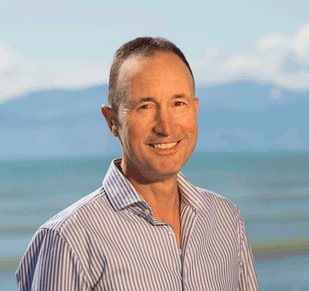The extensive and pristine coastland of Northland and the Bay of Islands, New Zealand, offers an aquatic playground for adventure and escapist relaxation. Whangarei and Opua are havens for international and local yachts. Tutukaka and Russell are game fishing hot spots. The beaches of Doubtless Bay are endlessly beautiful. And New Zealand’s rich colonial history is visible everywhere. Fine wine, gourmet food, world class golf, sumptuous spas and luxury lodges - these are passions that Northland understands. For travellers intent on packing more pleasure into their holiday plan, the sky's the limit.
Imagine an urban environment where everyone lives within half an hour of beautiful beaches, hiking trails and a dozen enchanted holiday islands. Add a sunny climate, a background rhythm of Polynesian culture and a passion for outstanding food, wine and shopping and you have a vibrant and sophisticated city. Auckland is New Zealand's largest city and has the main international airport in New Zealand. Two domestic terminals allow frequent and accessible flights throughout the country.
The Waikato region has two spectacular landscapes - one above ground, the other below. In both cases, nature reigns supreme. On the lush surface, the scenery is lush and green, the result of fertile soils, reliable rainfall and kind weather. Below the surface, vast cave systems, huge sink holes and underground streams provide plenty of options for adventure. Include in your travel plans a visit to the monuments and museums and discover the fierce history of the region.
Rustic, relaxed and unspoiled, the Coromandel is one of New Zealand's best-loved vacation destinations. The rugged volcanic hills are cloaked in native rainforest, and with more than 400 kilometres of spectacular coastline, travellers can be assured of finding the beach of their dreams.
The Bay of Plenty is a place of beautiful harbours, long white surf beaches and a sunny, easy going lifestyle. Everything you need for a great family holiday.
Eastland is the place where the first Polynesian migration canoes landed and where Captain Cook made his first landfall. Maori culture is evident in every settlement you see. There are carved meeting houses, beautifully painted Maori churches, children riding horses bareback on the beach and conversations in Te Reo.
Cape Kidnappers is at the southern end of Hawke Bay, on the east coast of the North Island. The name Kidnappers refers to an incident during Cook's first voyage when an attempt was made to trade with the occupants of an armed canoe. The warm and dry Mediterranean-style climate of Hawkes Bay produces the stunning red wine, for which the area is famous for. Hawkes Bay is also known to travellers as the Art Deco capital of the world.
The 800 square kilometre Tongariro National Park (a World Heritage Area) is the centre of attraction for this region. It was gifted to the country by the local Ngati Tuwharetoa people, who recognised that such a precious treasure belonged to all New Zealanders. The park protects three of New Zealand's most dramatic natural assets - the active andesitic volcanoes Ruapehu, Tongariro and Ngauruhoe. On a clear day at any time of the year, the mountains are awesome. Their cones and surrounding lava fields provide amazing opportunities for adventure and exploration.
The Lake Taupo region in New Zealand's volcanic heartland is rich in Maori tradition. It also has some of the country's finest untouched, uncrowded and unique landscapes. The lake formed, following the most violent volcanic eruption the world has seen in the past 5000 years - the ash affected the sunsets as far away as Europe and China.
Essentially rural with off-the beaten-track charm, Wairarapa promises a diverse experience for travellers who appreciate great wine, gourmet food, wildlife and natural beauty. Rolling vineyards, acres of apple orchards, fields of lavender, olive groves, heritage museums and quaint historic towns combine to make Wairarapa an appealing destination.
The Wanganui, Rangitikei, Manawatu, Horowhenua and Tararua districts are bound together by magnificent rivers, forested ranges, deep gorges and long stretches of wild surf beach. There is a strong emphasis on rural lifestyle in this region, as well as an exciting choice of outdoor adventures.
The dramatic, snow-topped volcanic cone of Mount Taranaki provides a spiritual compass for the people of this region. The mountain is the source of over 50 rivers and streams, the home of many botanically unique plants, and the subject of many stories and legends. On sighting the mountain in 1642, explorer Abel Tasman said it was "the noblest hill I've ever seen". The mountain and the Tasman Sea, provide a natural playground for travellers who enjoy outdoor adventures. The region is also known for its creativity and ingenuity - characteristics that materialise as beautiful gardens, fascinating museums and highly acclaimed art collections.
Wellington is New Zealand's capital city and is perfectly located between a picturesque harbour and forested green hills. The city is home to memorable arts, cultural and heritage attractions including the national museum, Te Papa. Natural attractions, such as the wild south coast, are within easy reach of the city centre. Wellington also has a sophisticated cafe scene and a vibrant nightlight.











